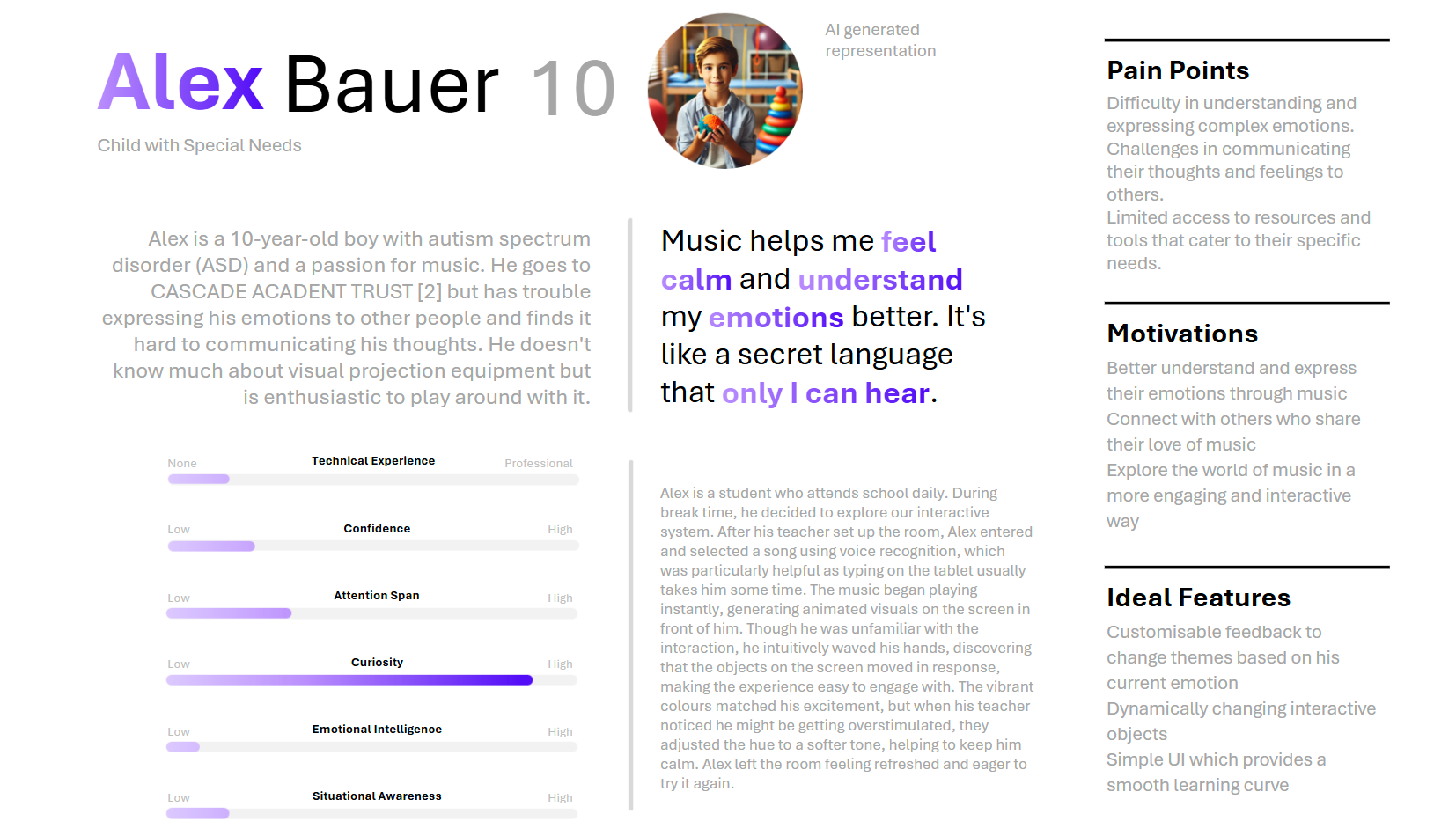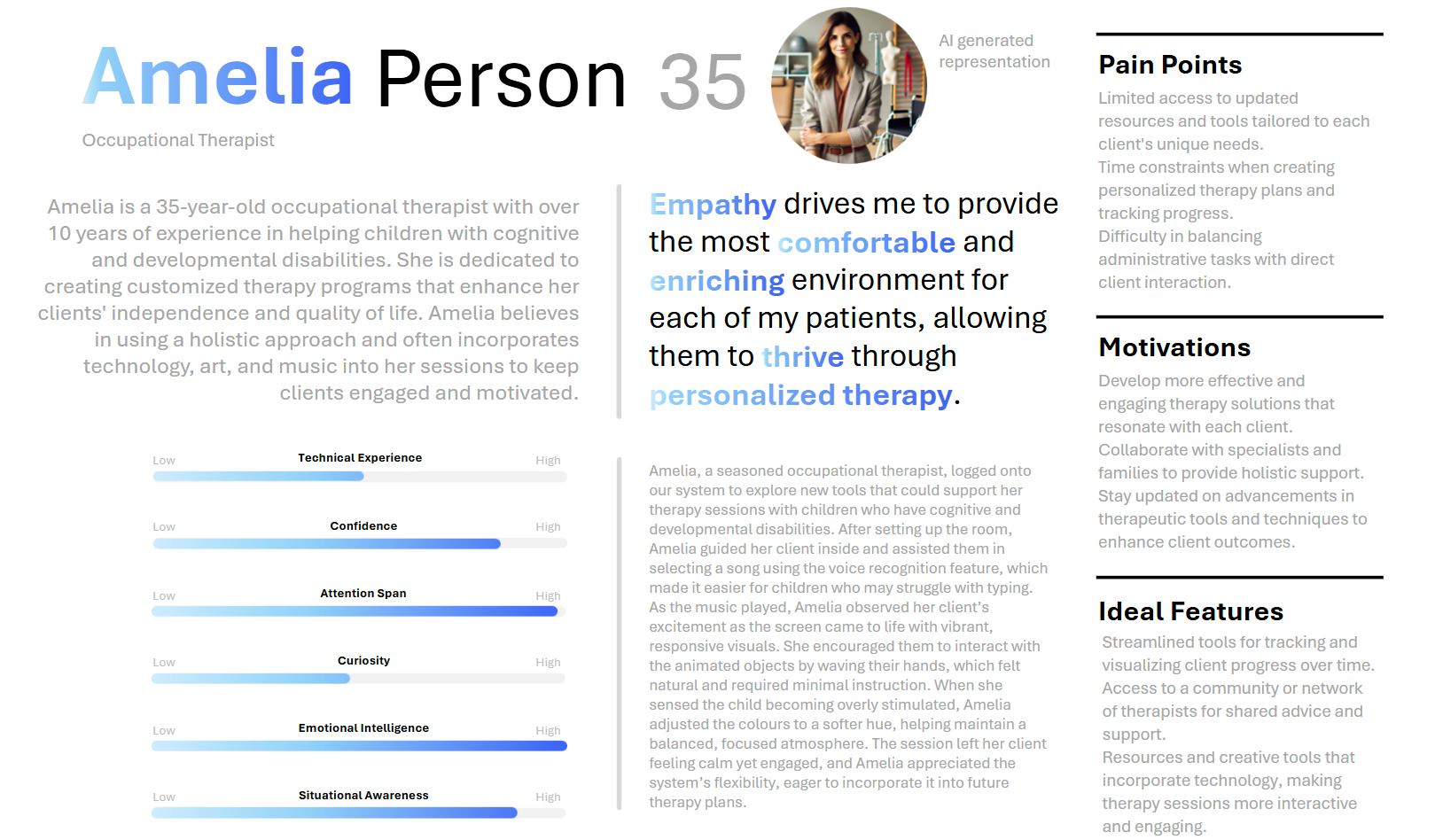Requirements Gathering
This section outlines our process for defining the requirements for Super Happy Space. We employed multiple methods to gather comprehensive insights from partners.
Interviews
We conducted semi-structured structured interviews with both occupational therapists and children with disabilities. These discussions revealed:
- Music serves as both a motivator and calming tool for children
- Children expressed wanting "lots of colours and lights that change with the music"
- Children preferred interactive elements they could touch and engage with
- Occupational therapists use the system of 4 zones of regulation to help manage children's emotions
- This zones regulation framework (represented by 4 colours) became a key feature, allowing us to colour-code songs and enable filtering by emotional state
Design Ideas and Heuristic Evaluations
After gathering initial requirements, we evaluated our prototype based on heuristic principles*to identify usability issues and improve the design. The key findings were:
- Recognition rather than recall: Some controls on the settings screen (e.g., brightness, volume, and audio balance) were not intuitive.
- Proposed Solution: Adding icons and tooltips to improve clarity.
- Aesthetic and minimalist design: The settings screen contained too many options, which could overwhelm users.
- Proposed Solution: Grouping controls and collapsing less frequently used settings.
- Error prevention: There was no undo option for accidental changes.
- Proposed Solution: A confirmation dialog now appears before applying crucial setting changes, ensuring users can review and confirm their actions.
- Feedback from clients: Clients wanted an easy way to filter songs based on emotions.
- Proposed Solution: Incorporating a colour-based filtering system inspired by the Zones of Regulation model.
Iterative Evaluation with Partners
To refine our prototype, we conducted multiple feedback loops with occupational therapists and children. Each iteration improved the design based on real-world testing. Key insights included:
- Simplicity is essential—interfaces needed to be easy to navigate.
- Theme colours based on mood were highly beneficial for children’s emotional regulation.
- Visual feedback that reacts to music made the system more engaging.
As one therapist noted:
"This feature would be incredibly useful, as the children have varying abilities. Adjusting the environment's colours can significantly enhance their mood and overall experience."
Core Requirements Identified
Based on our research, we identified five core requirements:
- Personalised Music Interaction – Users should be able to tailor their experience.
- Interactive Visual Feedback – The system should respond dynamically to music and user interaction.
- Adaptive Mood Settings – Colour-coded moods should be integrated into the experience.
- Ease of Use and Accessibility – The interface should be intuitive for both children and therapists.
- Therapist & Child-Friendly Design – The system should be engaging for children while maintaining therapeutic value.
This requirements gathering process ensured that Super Happy Space is both user-centric and aligned with therapeutic best practices.
Personas
The following are example personas which we collated for us to understand the users more. We made two personas representing our two main groups, children with special needs and occupational therapists supporting them. We discussed with occupational therapists from NAS to clarify our vision and place priorities in our MoSCoW requirement lists.

